Pico Dragon
EO
Mission complete
VAST
PicoDragon color camera
Quick facts
Overview
| Mission type | EO |
| Agency | VAST |
| Mission status | Mission complete |
| Launch date | 04 Aug 2013 |
| End of life date | 01 Mar 2014 |
| Instruments | PicoDragon color camera |
| CEOS EO Handbook | See Pico Dragon summary |
Pico Dragon
Overview
Pico Dragon is the first small satellite project of VNSC (Vietnam National Satellite Center), which was established in 2011 and is a research center of VAST (Vietnam Academy of Science and Technology). The predecessor organization was STI (Space Technology Institute), Hanoi, Vietnam. STI was founded in 2006 by the government of Vietnam with the objective to create an environment for conducting space research and to develop an indigenous manufacturing capability by training a work force with partners who are experienced in satellite technology. 1) 2)

The Pico Dragon project aims to promote the development of space technology sector, especially the first preparation for training human resources for self-designing and making Vietnam’s own earth-observation small satellites in the future. All steps in the process of developing the satellite, from researching, designing, making and integrating, to testing, were conducted in Vietnam. In addition, together with support from Japan, VNSC conducted tests at the laboratories of Prof. S. Nakasuka from Tokyo University and other pilots at JAXA to meet space environmental conditions before launching. With the experiment results, JAXA affirmed that the Pico Dragon met adequate conditions to lift into ISS by the HTV-4 cargo spacecraft (Ref. 10).
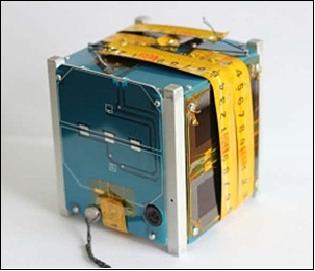
Spacecraft
Size | 100 x 100 x 113.5 mm |
Mass | 0.984 kg |
Operating life time (expected) | 3 months |
Orbit | Initial altitude ~410 km, inclination = 51.6º |
Sensor complement | - CMOS camera (640 x 480 dpi), to take some images of the Earth |
RF communications (amateur radio links) | - 100 mW CW beacon is on 437.250 MHz |
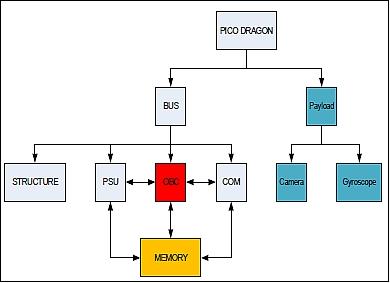
The CubeSat structure is made of Aluminum 6061-T6 and has a mass of 220 g.
OBC (On-Board Computer): The OBC has the following specification:
• Main MCU: 8 bit microcontroller Unit PIC16F877A
• 32 kB EEPROM as the main data storage
• The functions of the OBC subsystem are as follows:
- Receive the sensor data and store these in onboard memory (24C256 – 32 k EEPROM)
- Take pictures from space (random pictures)
- Generate the CW (Continuous Wave) signal
- Receive commands from ground station and execute them
- Form data packets for downlinks and output them to the communication subsystem via serial lines.
PSU (Power Supply Unit): The PSU is comprised of 3 components: solar cells, battery cells, and the processing circuit board. The functions of the PSU are:
- Providing power for the operation of all subsystems
- Collecting of the temporary voltage and current values to transfer to the ground station
- Provide a backup for the OBC
- Control of the antenna deployment.
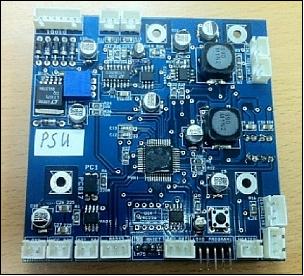
The solar cells were bought from Azurspace GmbH. They have dimensions of 40.15 x 80.15 mm. Two cells provide a power of 2.35 W.
The battery was chosen to satisfy some requirements such as: capacity, operation range temperature and capability of enduring harsh conditions in space environment. Use of a Li-ion battery with a capacity of 1450 mAh and a nominal voltage of 3.7 V.
RF communications
- Use of two two transmitters (430 MHz) and one receiver (144 MHz)
- A CW transmitter with low power (~100 mW). Another one is a FM transmitter with output power about 1 W. Both of them use one sharing halfwave dipole antenna with an antenna switch provided.
- One quarter-wave monopole antenna is used for the receiver.
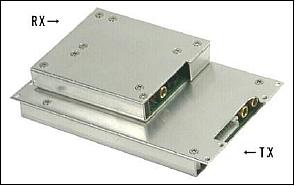
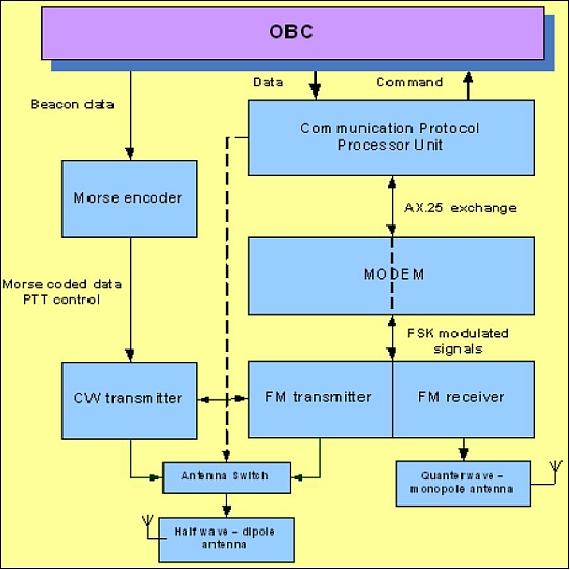
Launch
The Pico Dragon CubeSat was launched on Aug. 3, 2013 (2.48 hr UTC) as a secondary payload on the HTV-4 vehicle of JAXA and flown to the ISS (International Space Station). 4) 5) 6) 7) 8) 9)
The secondary payloads on this flight were:
• TechEdSat-3, a 3U CubeSat of NASA/ARC (Ames Research Center), it was developed by SJSU (San Jose State University) and the University of Idaho.
• Pico Dragon, a 1U CubeSat of VNSC (Vietnam National Center) 10)
• ArduSat-1, a 1U CubeSat of NanoSatisfi Inc., San Francisco, CA, USA
• ArduSat-X, a 1U CubeSat of NanoSatisfi Inc.
Orbit: The near-circular orbit of the ISS is at a nominal altitude of ~400 km with an inclination of 51.6º, period = 92.90 minutes.
Deployment of CubeSats
- On Nov. 19, 2013, three CubeSats ( Pico Dragon, ArduSat-1 and ArduSat-X) were deployed from the J-SSOD (JEM-Small Satellite Orbital Deployer). JAXA astronaut Koichi Wakata, Expedition 38 flight engineer, monitored the satellite deployment while operating the Japanese robotic arm from inside Kibo. 11)
- On Nov. 20, 2013 at 7:58 UTC, the next deployment took place in which the 3U TechEdSat-3 was released into orbit. 12)
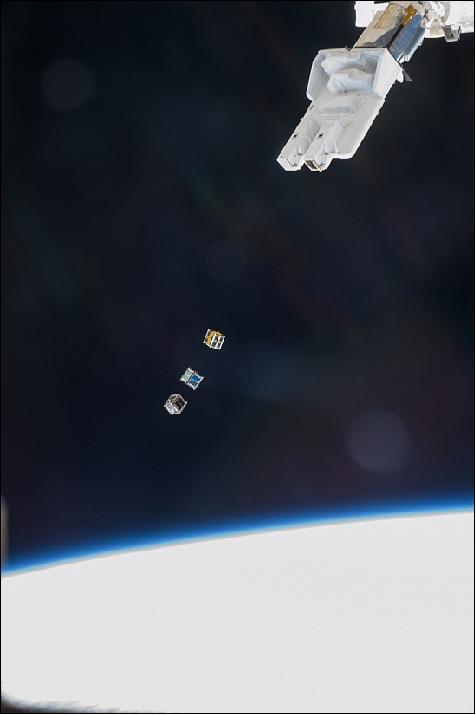
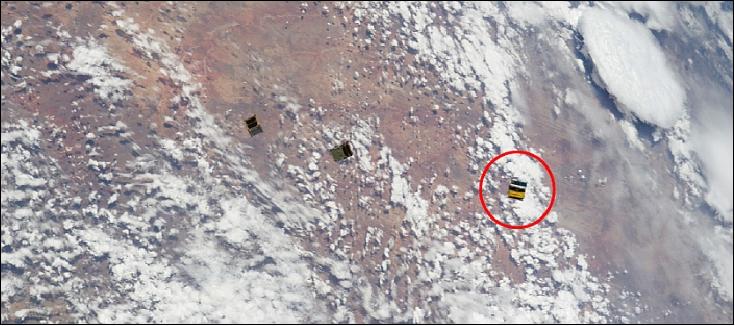
Mission Status
• First signals from Pico Dragon were received on Nov. 20, 2013 by several stations around the world, including the VNSC ground station (Ref. 3). 14)
Sensor Complement
• The main payload of Pico Dragon is the camera that can compress images in JPEG format, using OmniVision CMOS VGA color sensor with low power consumption.
• Use of a 3- axis gyroscope to measure the angular velocity when the satellite is on orbit.
• Some sensor types to gather data of the temperature, voltage and current of the satellite systems during its operation.

References
1) P. A. Tuan, V. T. D. Huong, N. T. Tuan, H. V. Quang, H. T. Huynh, B. N. Duong, “The development of small satellite in Vietnam,” Proceedings of the 28th ISTS (International Symposium on Space Technology and Science), Okinawa, Japan, June 5-12, 2011, paper: 2011-u-10
2) Do Xuan Phong, Vu Viet Phuong, Truong Xuan Hung, Le Xuan Huy, Bui Nam Duong, Do Xuan Phong, Le Trung Kien, Nguyen Tuan Vinh, Trinh Thang Long, Nguyen Van Thuc, Pham Anh Tuan, “CubeSat Pico Dragon,” The 5th Nano-Satellite Symposium, University of Tokyo, Tokyo, Japan, Nov. 20-22, 2013, URL: http://www.nanosat.jp/images/report/pdf/NSS-05-0402.pdf
3) Pham Anh Tuan, “The Development of Pico Dragon,” The 20th Session of the APRSAF (Asia-Pacific Regional Space Agency Forum), Hanoi, Vietnam, December 3-6, 2013, URL: http://www.aprsaf.org/annual_meetings/aprsaf20/pdf/program/day3/D3_1545_1_vietnam.pdf
4) “Launch Result of H-II Transfer Vehicle "KOUNOTORI4" (HTV4) by H-IIB Launch Vehicle No. 4,” JAXA Press Release, Aug. 4, 2013, URL: http://www.jaxa.jp/press/2013/08/20130804_h2bf4_e.html
5) “HTV4 (Kounotori 4) Mission Press Kit,” JAXA, August 2, 2013, Revision A, URL: http://iss.jaxa.jp/en/htv/mission/htv-4/presskit/htv4_presskit_a.pdf
6) Daisuke Tsujita, Toru Kasai, Hirohiko Uematsu, Masayuki Harada, Tsutomu Fukatsu, Hiroshi Sasaki, “Experiments plan on the HTV,” Proceedings of the 29th ISTS (International Symposium on Space Technology and Science), Nagoya-Aichi, Japan, June 2-8, 2013, paper: 2013-g-13
7) “Kounotori 4 encapsulated,” JAXA, July 19, 2013, URL: http://iss.jaxa.jp/en/htv/mission/htv-4/news/htv4_encapsulated.html
8) Patrick Blau, “HTV-4 Cargo Manifest,” Spaceflight 101, URL: http://www.spaceflight101.com/htv-4-cargo-manifest.html
9) “HTV4 (KOUNOTORI4) Mission,” JAXA, Aug. 4, 2013, URL: http://iss.jaxa.jp/en/htv/mission/htv-4/
10) “Vietnam micro-satellite carried into space by Japan’s HTV-4 cargo spacecraft,” VAST, Aug. 5, 2013, URL: [web source no longer available]
11) “Successful re-entry of H-II Transfer Vehicle “KOUNOTORI4” (HTV4),” JAXA Press release, Sept. 7, 2013, URL: http://www.jaxa.jp/press/2013/09/20130907_kounotori4_e.html
12) Patrick Blau, “Four CubeSats deployed from Space Station,” Spaceflight 101, Nov. 20, 2013, URL: http://www.spaceflight101.com/iss-expedition-38-updates-november-2013.html
13) “Cubesats Released From Space Station,” NASA, Nov. 19, 2013, URL: http://www.nasa.gov/content/cubesats-released-from-space-station-0/#.Upb29yeFcyU
14) “Made-in-Vietnam micro satellite sends signals to Earth,” Vietnam Breaking News, Nov. 21, 2013, URL: http://www.vietnambreakingnews.com/2013/11/made-in-vietnam-micro-satellite-sends-signals-to-earth/#.UsaXw_uFf_o
The information compiled and edited in this article was provided by Herbert J. Kramer from his documentation of: ”Observation of the Earth and Its Environment: Survey of Missions and Sensors” (Springer Verlag) as well as many other sources after the publication of the 4th edition in 2002. - Comments and corrections to this article are always welcome for further updates (eoportal@symbios.space).